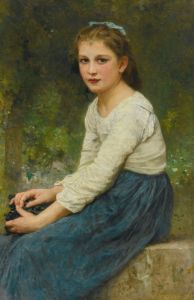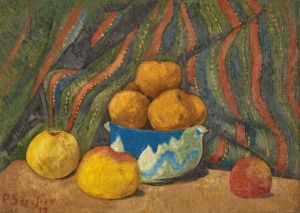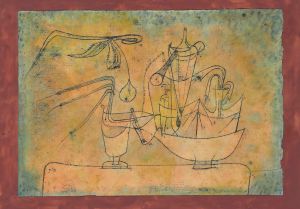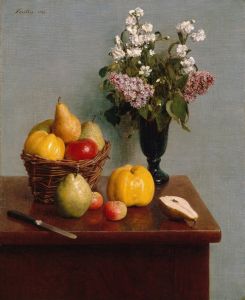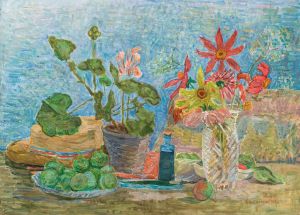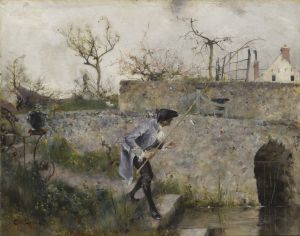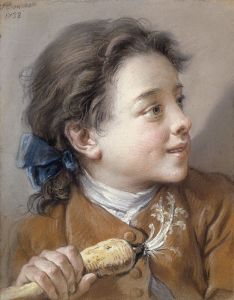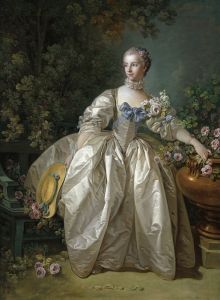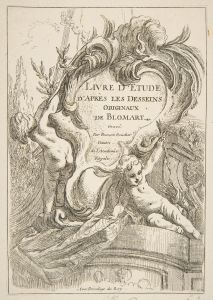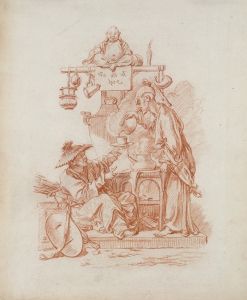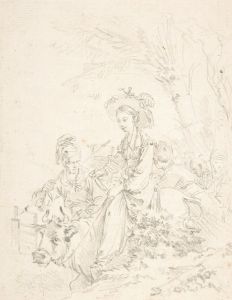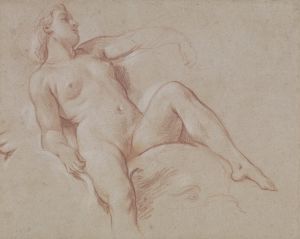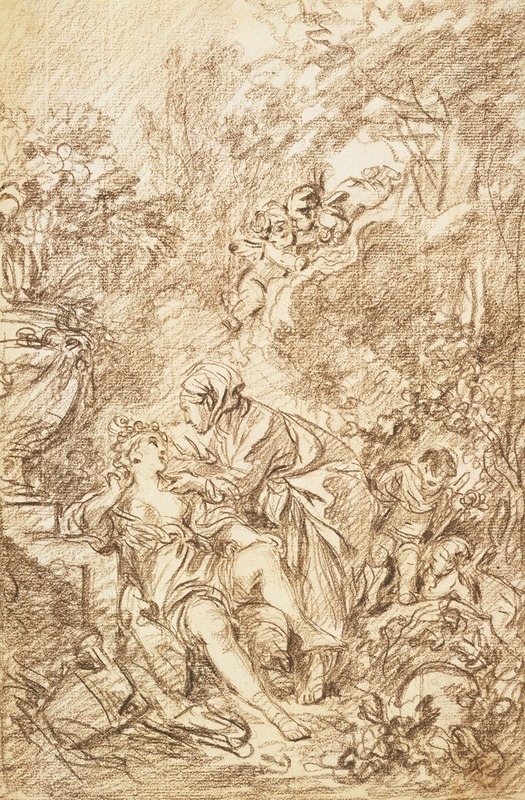
Vertumnus and Pomona
A hand-painted replica of François Boucher’s masterpiece Vertumnus and Pomona, meticulously crafted by professional artists to capture the true essence of the original. Each piece is created with museum-quality canvas and rare mineral pigments, carefully painted by experienced artists with delicate brushstrokes and rich, layered colors to perfectly recreate the texture of the original artwork. Unlike machine-printed reproductions, this hand-painted version brings the painting to life, infused with the artist’s emotions and skill in every stroke. Whether for personal collection or home decoration, it instantly elevates the artistic atmosphere of any space.
François Boucher's "Vertumnus and Pomona" is a notable work that exemplifies the Rococo style, which was prominent in the 18th century. Boucher, a leading French painter of the time, was renowned for his idyllic and voluptuous paintings, often depicting classical themes with a playful and sensuous touch. This particular painting draws inspiration from the Roman mythological tale of Vertumnus and Pomona, as recounted in Ovid's "Metamorphoses."
The myth of Vertumnus and Pomona revolves around the story of Vertumnus, the god of seasons, change, and plant growth, and Pomona, a nymph associated with fruitful abundance. Pomona was known for her dedication to her orchards and gardens, shunning the attention of suitors to focus on her horticultural pursuits. Vertumnus, enamored with Pomona, attempted to win her affection by disguising himself in various forms. Ultimately, he revealed his true identity, and his persistence and genuine love won Pomona's heart.
Boucher's interpretation of this myth captures the essence of Rococo art, characterized by its lightness, elegance, and use of soft colors. The painting likely features the lush, verdant landscapes typical of Boucher's work, with an emphasis on the sensual and the decorative. The figures of Vertumnus and Pomona are often depicted in a playful and intimate interaction, reflecting the themes of love and transformation inherent in the myth.
Boucher's work was highly influential in the court of Louis XV, and he was a favorite of Madame de Pompadour, the king's mistress and a significant patron of the arts. His paintings, including "Vertumnus and Pomona," were celebrated for their ability to capture the frivolity and opulence of the Rococo period. The painting would have been appreciated not only for its mythological content but also for its aesthetic appeal, showcasing Boucher's skill in rendering textures, fabrics, and the human form with a delicate touch.
The Rococo movement, with which Boucher is closely associated, was characterized by its departure from the grandeur and seriousness of the Baroque, favoring instead a more playful and ornamental approach. This style was well-suited to the tastes of the French aristocracy, who sought art that reflected their own luxurious and carefree lifestyle.
While specific details about the provenance or current location of "Vertumnus and Pomona" by François Boucher may not be readily available, his works are held in high esteem and can be found in major museums and collections around the world. Boucher's legacy as a master of the Rococo style endures, and his paintings continue to be studied and admired for their technical brilliance and their embodiment of 18th-century French art.
In summary, "Vertumnus and Pomona" by François Boucher is a quintessential example of Rococo art, capturing the mythological narrative with elegance and charm. Through this painting, Boucher not only illustrates a classical tale but also reflects the artistic and cultural values of his time, making it a significant piece in the history of art.





